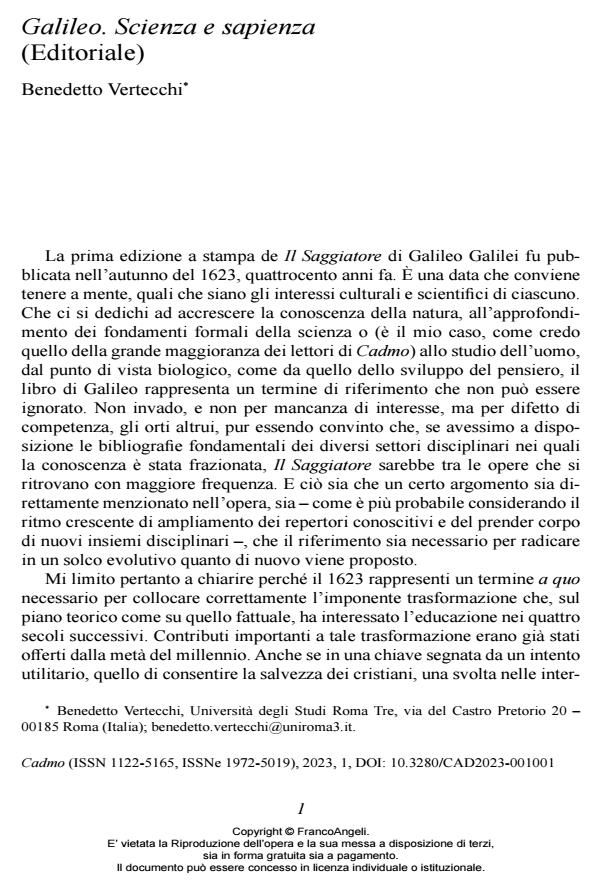Galileo and the pendulum: an example of living science
Journal title CADMO
Author/s Benedetto Vertecchi
Publishing Year 2023 Issue 2023/1
Language Italian Pages 11 P. 1-11 File size 285 KB
DOI 10.3280/CAD2023-001001
DOI is like a bar code for intellectual property: to have more infomation
click here
Below, you can see the article first page
If you want to buy this article in PDF format, you can do it, following the instructions to buy download credits

FrancoAngeli is member of Publishers International Linking Association, Inc (PILA), a not-for-profit association which run the CrossRef service enabling links to and from online scholarly content.
We describe a didactical activity in which we measure the isochronism of the small oscillations of a pendulum by means of a water clock, built by the students, inspired by Ctesibio’s clock (III century b. C.). The risks of a poorly designed didactic transposition are considered: first and foremost, that of fossilising scientific notions and losing the research work that sup- ports it. In particular, the relevance of movement and doing in learning the mathematicalscientific area is considered.
Keywords: laboratory teaching, history of science, didactic transposition, Galileo, pendulum.
Benedetto Vertecchi, Galileo. Scienza e sapienza. (Editoriale) in "CADMO" 1/2023, pp 1-11, DOI: 10.3280/CAD2023-001001